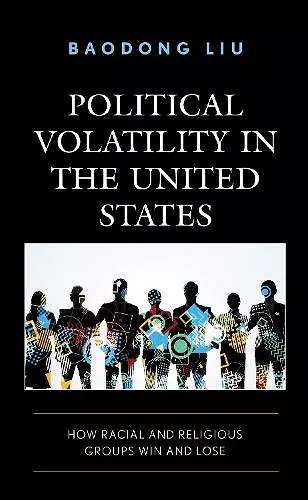Political Volatility in the United States
How Racial and Religious Groups Win and Lose
Format:Paperback
Publisher:Bloomsbury Publishing PLC
Published:22nd Aug '23
Currently unavailable, and unfortunately no date known when it will be back
This paperback is available in another edition too:
- Hardback£85.00(9781793651280)

The unexpected shift from the election of Barack Obama and the post-racial hope to the racial confrontations in the Trump era begs the question: Why did such a big volatile swing happen in such a short period of time? Uncertainty reigns in volatile political times. This book aims to provide a systemic model for understanding how political volatility throughout the U.S. history has had its root in two competing racial and religious groupings. Moreover, the groupings grounded in white supremacy and egalitarianism have collided, contested, and facilitated the configuration and reconfiguration of the atomic political structure. As demonstrated in this book, the antagonism between the two competing identity groupings led to a history of political volatility in the United States. Contrary to the endless “political deadlocks” suggested by the scholars of American political development, this book explains how and why the two orders persist, reach peaks of volatility, and why one temporarily achieves prominence over the other. Going beyond the simplistic view of racial and religious hierarchy, this book provides an account rooted in structural tensions, strategic imperatives, opportunities, and threats on collective actions.
Theoretically rich and empirically sound, this work goes a long way in building our understanding of the complex relationship between religion and the Trump phenomenon. It should be required reading for anyone who wishes to understand contemporary U.S. politics today.
-- Laura Olson, Clemson UniversityLiu examines the relationships between WASPs (white Anglo-Saxon Protestants)—the dominant group in the US—and others over the nation's recent history. WASPs find groups similar to themselves—such as German Protestants and Catholics—to be the most socially acceptable and feel threatened by those who are most unlike them, particularly Black people. As such, treatment of what Liu labels subordinate groups can vary, and he introduces a five-part schema to explain the relationships between dominant and subordinate groups. Liu uses Mitt Romney's 2012 presidential campaign as a recurring example. White Evangelicals rejected Romney for his Mormon faith in the presidential primaries but became his strongest supporters in the general election. Liu concludes that the status of a subordinate group can change when a competing faction within the dominant group seeks allies. The volume ends with an analysis of Donald Trump’s successful presidential campaign in 2016, in which Trump attacked Muslims and Mexicans, whom he portrayed as threats to an enlarged dominant group (WASPs and other whites of European descent). Liu's book sheds light on some of the most influential relationships and dynamics in US social and political life.
* Choice Reviews *Beyond the case studies presented in the book, the generalizability of Liu’s Atomic Structure Theory is particularly valuable for observers of American electoral politics. The theory can be applied to other underrepresented groups such as female candidates, women of color who run for office and LGBTQ candidates. Through Liu’s extensive incorporation of the literature on American political development, political theory, and political psychology, he creates an easy to digest understanding of American history and contemporary events for less advanced readers and experts. The book is ideal for courses on racial and ethnic politics, religion and politics, American Studies and Ethnic Studies.
-- Stefanie Chambers, Ph.D., Professor of Political Science & Chair, Trinity ColISBN: 9781793651303
Dimensions: 230mm x 154mm x 15mm
Weight: 390g
244 pages